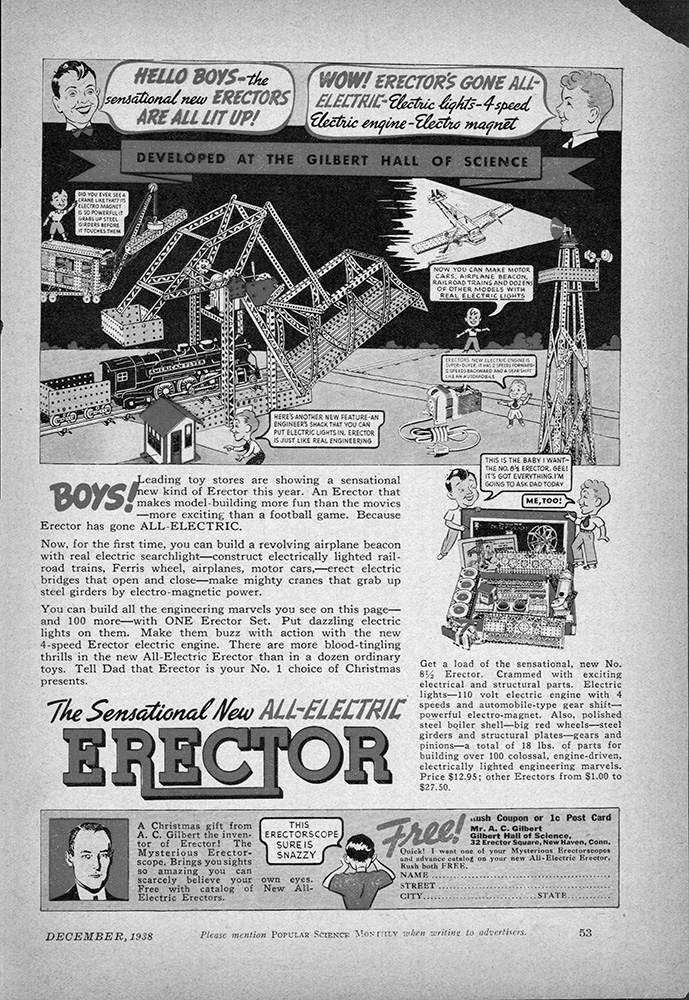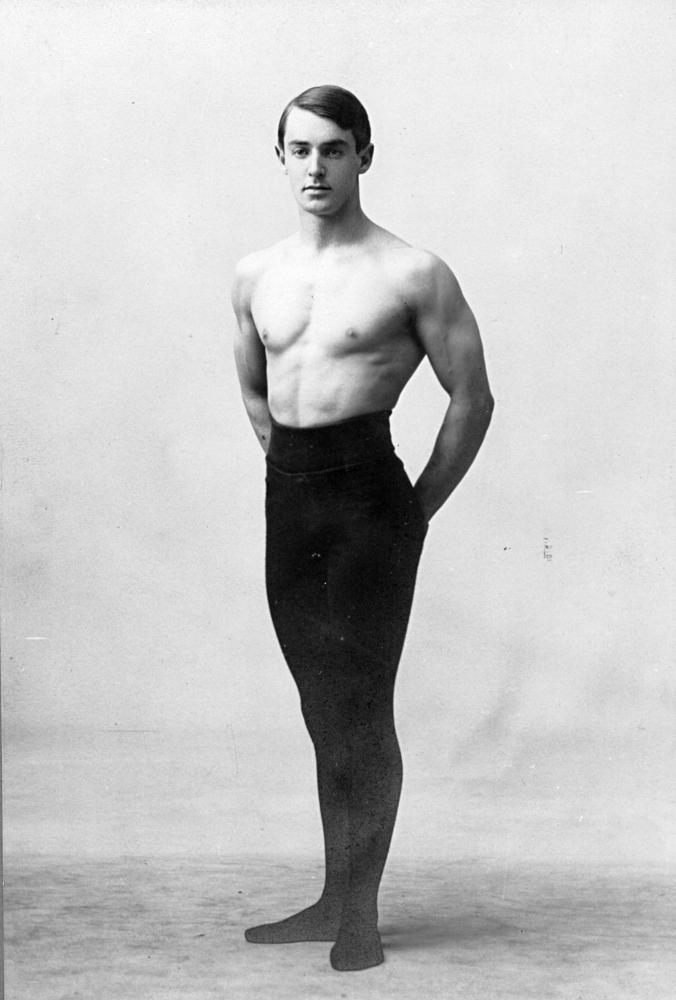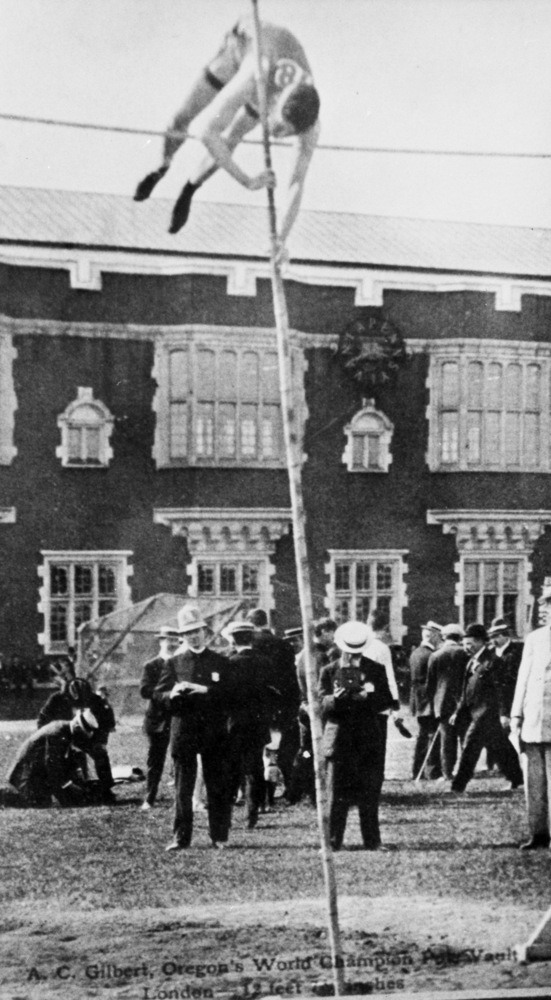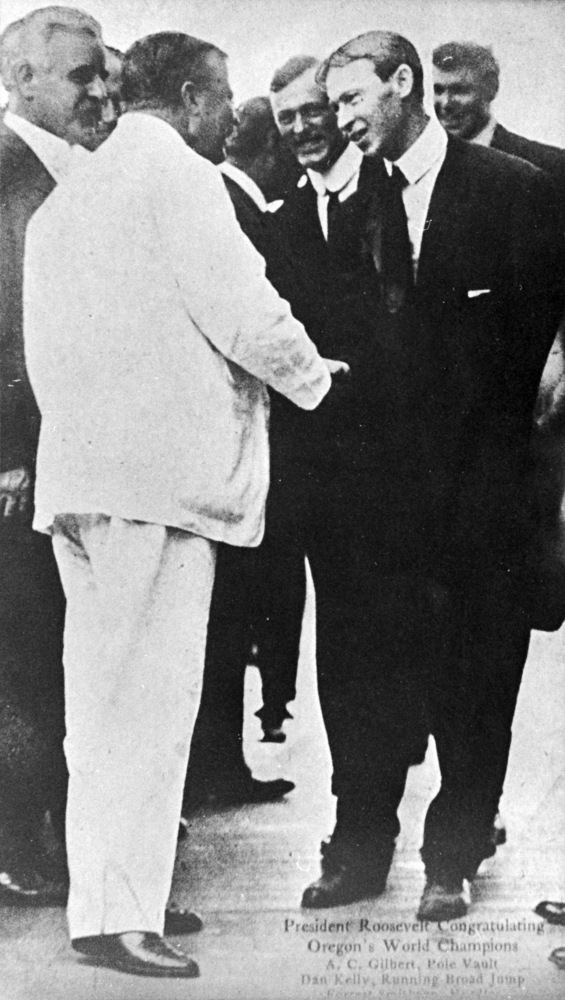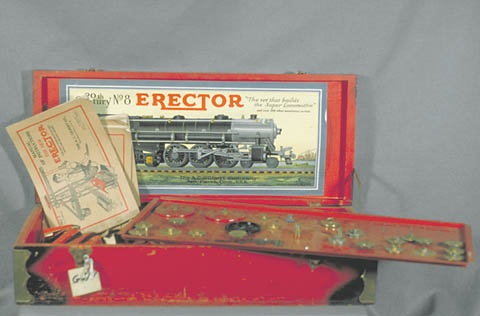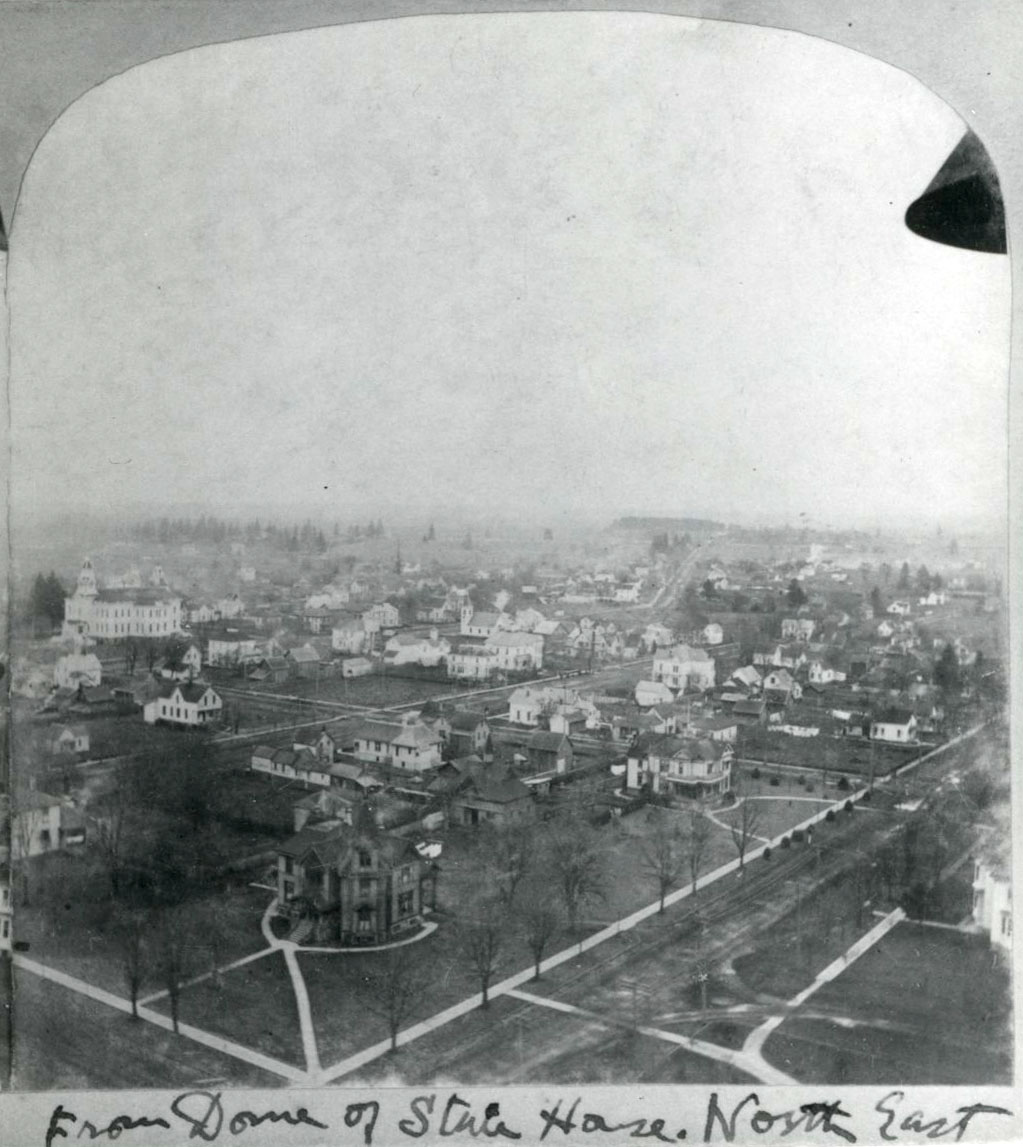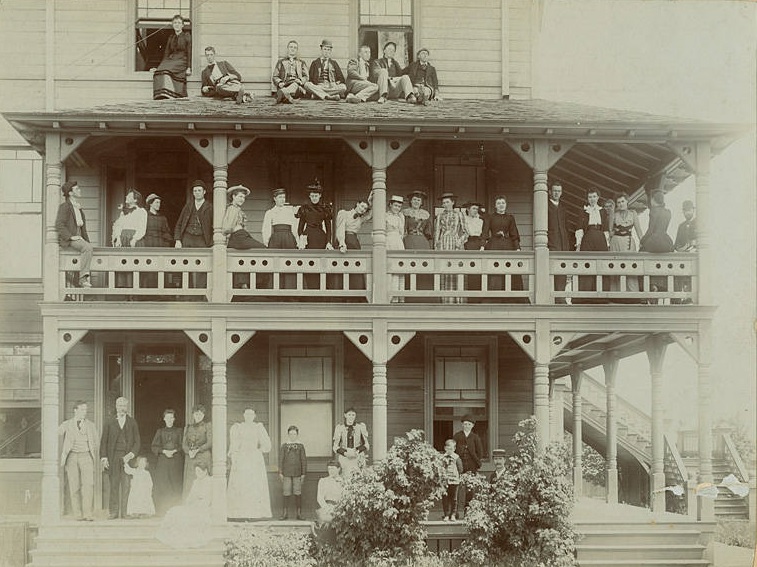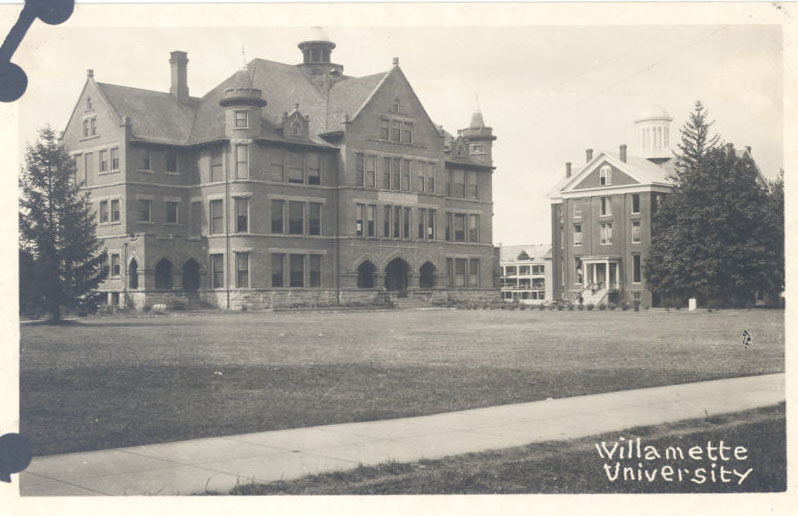A.C. Gilbert—the inventor of the Erector Set and other educational toys—was born on February 15, 1884, in Salem, Oregon. As a young boy, he was very athletic and once ran away with a minstrel show to become the "Champion Boy Bag Puncher of the World." Gilbert attended track meets at Willamette University and a magic show at the Reed Opera house, events that set the direction for the rest of his life.
While at Tualatin Academy in Forest Grove (now Pacific University), Gilbert excelled in athletics and received more than one hundred trophies and ribbons, especially in football, wrestling, boxing, and track and field. In 2007, he was inducted posthumously into the Pacific University Athletic Hall of Fame.
After attending Pacific University, Gilbert transferred to Yale University where he completed a degree in medicine. While at Yale, he competed in the 1908 Olympics in London, breaking the world record and winning a gold medal in pole vaulting.
Gilbert earned college money by performing magic. In 1909, he co-founded Mysto Manufacturing in New Haven, Connecticut, to make magic kits. Inspired by watching cranes lift steel gerders, in 1913 he started making Erector sets—originally called the Mysto Erector Structural Steel Builder—a toy that became a household name.
In 1915, the Erector set won a Gold Medal at the Panama Pacific Exposition in San Francisco. Mysto Manufacturing became the A.C. Gilbert Company a year later. Gilbert eventually expanded his line of toys to include chemistry, microscope and crystal radio sets, metal puzzles, and even an Atomic Energy Kit. In 1938, he purchased the rights to American Flyer trains. At his death, Gilbert held over 150 patents.
"Hello Boys! Make Lots of Toys" was the marketing slogan for the first Erector sets. There were Erector set building competitions, and Gilbert once gave away a German Shepherd dog as a prize. He issued certificates to boys for the Gilbert Institute of Engineering and in 1941 opened the Gilbert Hall of Science in New York City.
In 1916, Gilbert co-founded and became the first president of the Toy Manufacturers of America (TMA). During World War I, Congress wanted people to purchase Liberty Bonds instead of toys. As the president of TMA, Gilbert took Erector sets to a meeting with the secretaries of Commerce, War, and the Interior and convinced the Council of Defense that toys were essential to learning. As a result, the selling of toys was not banned, and Gilbert became known as "The Man Who Saved Christmas."
Gilbert married Mary Thomas in 1908; they had three children. He retired in 1954 and published his autobiography, The Man Who Lives in Paradise, the same year. Gilbert died on January 24, 1961.
-
![]()
Erector set ad, Popular Science Monthly, 1938.
Courtesy A.C. Gilbert Heritage Society -
![]()
Alfred Carlton Gilbert, October 1908.
Oreg. Hist. Soc. Research Lib., bb004365
-
![]()
A.C Gilbert, world champion pole vaulter, at the 1908 Olympics.
Oreg. Hist. Soc. Research Lib., bb006127
-
![President Theodore Roosevelt shakes hands with 1908 Olympic pole vault champion, A. C. Gilbert.]()
A. C. Gilbert and Pres. Roosevelt.
President Theodore Roosevelt shakes hands with 1908 Olympic pole vault champion, A. C. Gilbert. Oreg. Hist. Soc. Research Lib., bb004368
-
![]()
Erector set: "20th Century No 8 ERECTOR, the set that builds the Super Locomotive" and over 398 other sensational models.".
Oregon Historical Society Museum, 91-97.39.1-.5
Related Entries
-
![City of Salem]()
City of Salem
Salem, the capital of Oregon, is located at a crossroads of trade and t…
-
![Pacific University]()
Pacific University
Pacific University, one of the oldest universities in the American West…
-
![Willamette University]()
Willamette University
Willamette University, the oldest university in the West, was founded i…
Map This on the Oregon History WayFinder
The Oregon History Wayfinder is an interactive map that identifies significant places, people, and events in Oregon history.
Further Reading
Gilbert, A.C., with Marshall McClintock. The Man Who Lived in Paradise. New York: Rhinehart, 1954.
Watson, Bruce. "The Man Who Saved Christmas." Smithsonian Magazine, May 1999, 120-34.
Watson, Bruce. The Man Who Changed How Boys and Toys Were Made: The Life and Times of A. C. Gilbert. Reprint ed. New York: Penguin Books, 2003.



